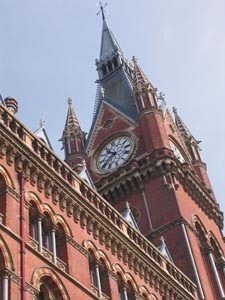Eight thousand years ago the Thames was a tributary of the Rhine. And if the cities had actually existed, you would have been able to walk from London to Rome without getting your felt-bound feet wet. Since then, geology has given us the Channel, a practical and psychological barrier that defines national identity.
The idea of a tunnel beneath this barrier dates back to the Treaty of Amiens 1751. Here reach exceeded grasp and the first realistic — although the word is used loosely — proposals were made to Napoleon by a mining engineer, Albert Mathieu, in only 1802. Mathieu wanted to turn the mid-Channel Varne bank into an island, with shorter tunnels going north to England and south to France. Nothing came of it. Channel tunnelling first became a science with Thomé de Gamond (1807–75), who inspected the seabed in a diving bell, but his diligent research brought no practical result.
Proposals were revived in 1906 by a new Channel Tunnel Company and staggered on, reversed by wars and politics, into the Thirties. Now the superlatively reactionary 27th Earl of Crawford and Balcarres entered the debate. A Channel tunnel would lead to more foreign visitors and that would increase criminality and vice, his lordship insisted. Crawford’s special subjects were the white slave trade, pornography, drugs and prostitution. He was anxious to protect Britain from continental depravity, particularly the French obsession with nudity and the (predominantly) German specialisation in homosexuality.
Despite Crawford’s warnings, plans for a fully engineered (if not quite fully funded) twin-rail Channel tunnel were eventually announced at Lille’s Hotel de Ville in January 1986, the happy result of a solemn Mitterrand grand projet and Mrs Thatcher’s unreflective megalomania. Mrs T. predicted she would be the first to drive though the tunnel at the wheel of her own car, but we never became a driver.







Comments
Join the debate for just £1 a month
Be part of the conversation with other Spectator readers by getting your first three months for £3.
UNLOCK ACCESS Just £1 a monthAlready a subscriber? Log in